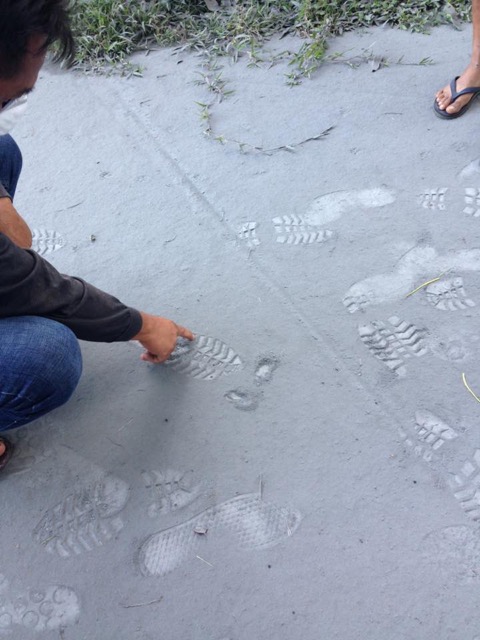Lahar flow in areas in Negros Oriental, Negros Occidental

Bago City health workers distributing masks to protect residents against ash. (File photo)
Updated on June 6, 2024 at 12:28 a.m.
MANILA, Philippines — The state volcanologists confirmed that a “muddy sheet wash” or lahar was observed in Canlaon City in Negros Oriental and La Castellana in Negros Occidental on Wednesday afternoon.
“Yes, meron. Sa La Castellana rin, meron,” Philippine Volcanology and Seismology (Phivolcs) Director Teresito Bacolcol told INQUIRER.net over the phone when asked if there was mud flowing through some portions of Canlaon City from Kanlaon volcano.
The extent and exact time when it was recorded is still being verified by the team of Philippine Volcanology and Seismology (Phivolcs) in the affected areas.
READ: Kanlaon eruption affects 1,888 individuals in 20 villages – NDRRMC
Article continues after this advertisement“Yes, meron. Sa La Castellana rin, meron,” Phivolcs Director Teresito Bacolcol told INQUIRER.net over the phone when asked if there was mud flowing through some portions of Canlaon City from Kanlaon volcano.
Article continues after this advertisement“Maulan kasi ngayon sa Canlaon City at sa La Castellana,” he explained.
(It’s raining today in Canlaon City and La Castellana.)
READ: Kanlaon Volcano erupts; Phivolcs raises Alert Level 2
He also clarified that the Kanlaon Volcano did not erupt again, contrary to what is circulating on social media.
“Wala pong eruption,” he said.
(There is no eruption.)
Phivolcs later confirmed that the mudflow was indeed lahar.
According to Phivolcs Volcano Monitoring and Eruption Prediction Division chief Antonia Bornas, lahar refers to “fine-grained debris flows, based on the additional videos and photos gathered.”
“The visual aid is if the stream is flowing like cement, then that’s a lahar,” she added, warning that it is “able to carry boulders.”
Both Phivolcs and the Office of the Civil Defense (OCD) have yet to identify the specific areas affected by lahar, but an initial report from the OCD states that Barangay Biak na Bato in La Castallena was affected by the volcanic debris.
In a separate statement, Phivolcs said that thunderstorms in the early afternoon of June 5 generated volcanic sediment flow, or lahars, on the southern slopes of the volcano.
“These lahars began approximately around 1 p.m. and lasted 25 minutes based on the seismic record,” it added.
The Phivolcs also said “grey cohesive mud, plant debris, and gravel” were deposited by lahars in at least four waterways: Tamburong Creek, Intiguiwan River, Padudusan Falls, and Binalbagan River, which drains the southern flank of Kanlaon Volcano.
“The lahars were generally channel-confined, but flows along Tamburong Creek overflowed and dumped a few centimeters of deposit on a stretch of the main road in Biak-na-Bato, rendering this impassable to motorists,” the state volcanologists said.
It also warned that heavy rain forecast in Negros Island for Thursday, June 6 could generate lahars, muddy streamflows, or muddy run-off in the mentioned and other rivers.